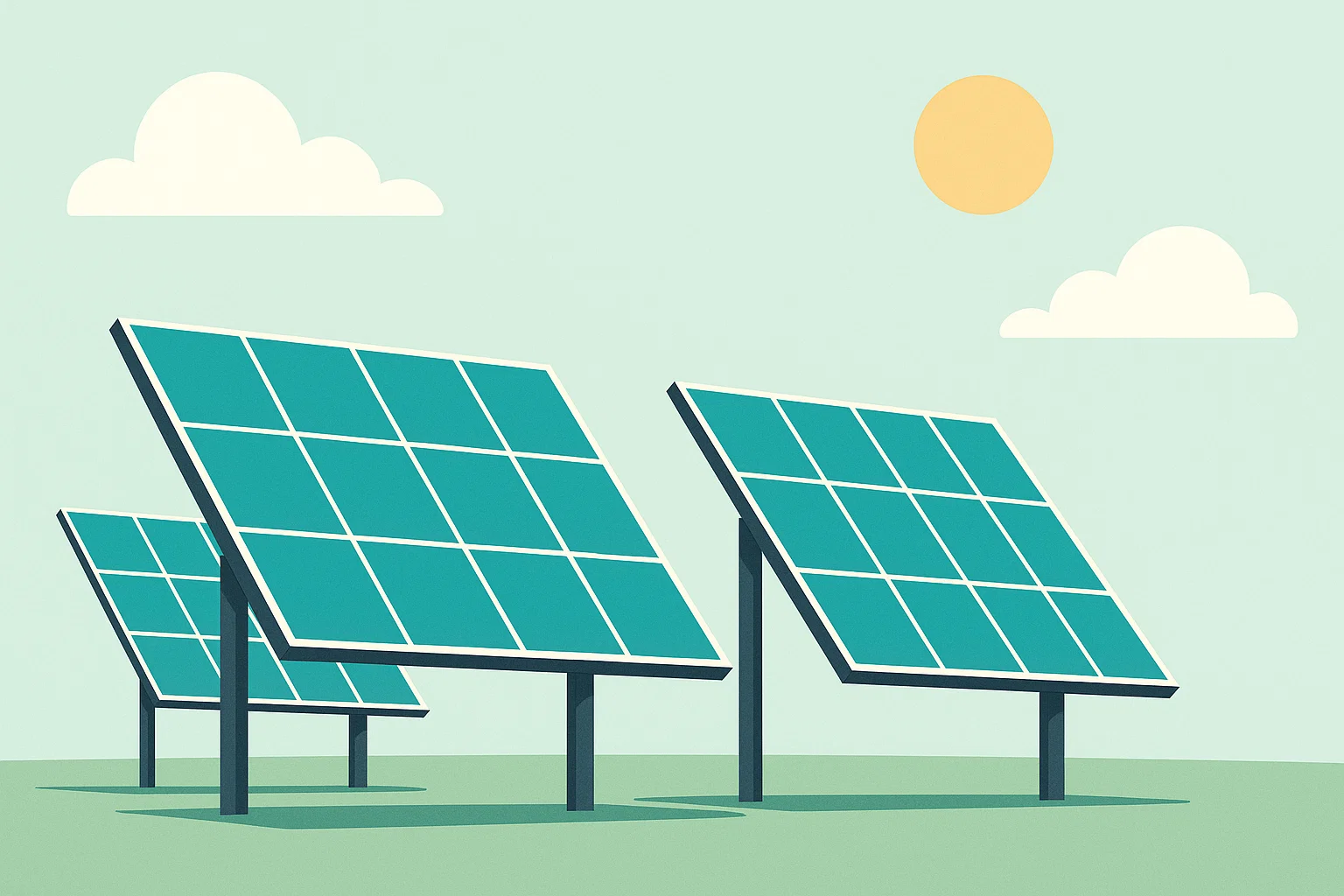Fixed-Tilt Mounting Systems: Reliable, Scalable, Low‑Maintenance
Fixed mounting systems secure PV modules at a predetermined tilt (often near local latitude) to maximize year‑round yield without moving parts. They dominate utility‑scale ground mounts and many commercial sites thanks to straightforward engineering, rapid installation, and robust lifecycle performance.
Key Features of Fixed Mounting Systems
Fixed Tilt Geometry
-
Set at a predetermined angle (often close to site latitude) to balance summer/winter production.
-
Ideal for ground‑mounts, utility‑scale arrays, and sites where roofs are unsuitable.
Materials & Corrosion Control
- Hot‑dip galvanized steel or structural aluminum for durability and strength‑to‑weight.
- Fasteners, clamps, and rails selected for galvanic compatibility in the corrosivity class of the site.
Foundation Options
- Pile‑driven posts are common for large, uniform sites.
- Concrete footings/screw anchors for difficult soils, high corrosion risk, or small arrays.
Installation & Scalability
- Modular post‑and‑beam substructures support large formats and varied stringing.
- Pre‑engineered kits reduce field labor and QA variability.
Note: Fixed‑tilt arrays typically produce less energy than trackers on the same footprint, but they offset this with simpler engineering, lower CAPEX, and lower O&M—especially attractive in harsh climates and high‑wind/snow regions.
System Types & When to Use Them
Single‑post systems e.g., Schletter FS Uno
- Good on undulating terrain; fewer foundations lower material and pile count.
- Fast assembly with lighter equipment.
Dual‑post systems e.g., Schletter FS Duo
- Higher load capacity and stiffness for wide tables and heavy snow/wind loads.
- Efficient for large, flat sites with repeatable spans.
Concrete‑based frames e.g., PVMax‑S / PVMax3
- For sites where pile driving isn’t feasible (rocky ground, landfills, high corrosion).
- Often used in coastal or brownfield projects.
Modular kits
- Suited to small commercial and remote/off‑grid deployments.
- Emphasize quick install, minimal tooling, and scalability.
Fixed‑Tilt vs. Tracker Systems
| Criterion | Fixed‑Tilt | Single‑Axis Trackers |
|---|---|---|
| Energy yield | Baseline production; ~15–20% less than trackers on average. | Higher annual kWh due to sun‑following. |
| CAPEX & complexity | Lower; simple civil works, fewer moving parts. | Higher; actuators, controllers, wiring, and QA. |
| O&M | Minimal; periodic torque checks and visual inspection. | Greater; moving components and controls require upkeep. |
| Resilience | Robust in high wind/snow/icing; fewer failure modes. | More components exposed to weather and misalignment risk. |
| Best for | Harsh climates, constrained budgets, simple schedules. | Large, flat sites prioritizing maximum MWh per acre. |
Leading Brands & Notable Products
Ultra‑durable steel/aluminum platforms with well‑documented structural libraries and accessories for diverse soils.
Known for structural strength and versatile clamp ecosystems; clear span tables for common module sizes.
Installation‑friendly hardware and detailed install guides; popular in utility and multifamily settings.
Simple, scalable kits for small to mid‑sized projects emphasizing speed and clean cable management.
Wide range of post and beam geometries and foundation options to match varying soils and topographies.
Robust post‑and‑beam substructures compatible with large‑format modules; optimized for quick field assembly.
How to Choose: A Short Checklist
Site & Structure
- Soil conditions (SPT/RQD), groundwater, frost line, and corrosion class.
- Design wind/snow/ice loads; check local building codes and setbacks.
- Topography: slope, terrain undulation, drainage, and access lanes.
Array & Economics
- Tilt angle near latitude for balanced yield; adjust for specific tariff or seasonal priorities.
- Module format and table geometry (portrait/landscape, row spacing, DC/AC ratio).
- Budget & schedule: fixed‑tilt hardware often ~10% of total system cost.
Tip: Ask vendors for stamped structural calcs, pull‑out tests (if pile‑driven), and corrosion certificates. Validate tolerance for module thickness, clamp zones, and wire management before procurement.
FAQ
What tilt angle should I choose?
As a rule of thumb, start near your site latitude to optimize annual production. If winters are overcast or tariffs favor summer afternoons, modest adjustments can improve seasonal economics. Always confirm with energy modeling.
When are fixed‑tilt systems preferable to trackers?
They shine in high wind/snow zones, complex terrain, small/medium sites, or when simplicity, resilience, and predictable O&M are key priorities.
Can I switch to trackers later?
Foundations and table geometry differ; plan for the chosen architecture from the outset. Retrofitting is usually non‑trivial and may require re‑permitting.
Which foundation is best for my soil?
Pile‑driven posts suit many uniform soils. Use concrete or screw anchors for rocky, shallow‑bedrock, landfill, or highly corrosive conditions. A geotech report should guide the choice.
Need a quick spec?
Share your site latitude, soil notes, design loads, and module size. I’ll outline a fixed‑tilt table layout and a short bill of materials.
References: product names are examples commonly used in the industry. Always verify final engineering, codes, and warranty requirements with manufacturers and local authorities.

